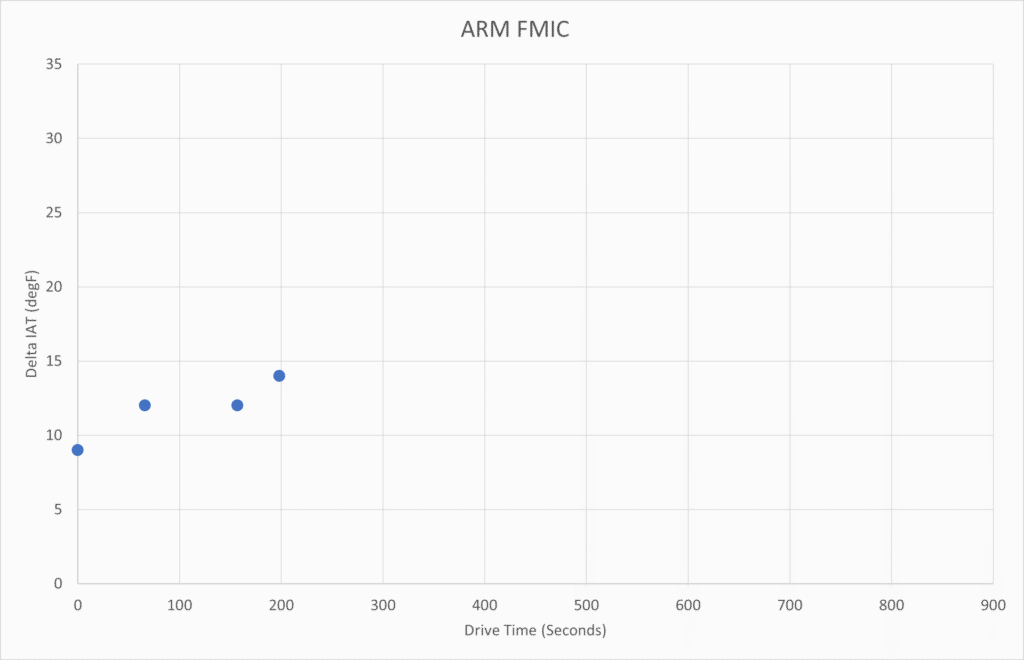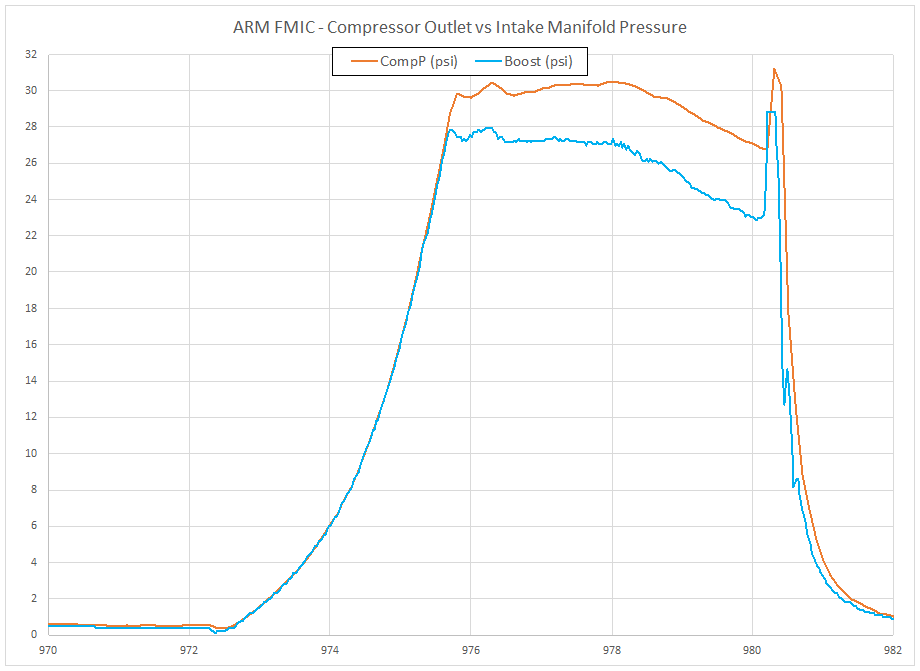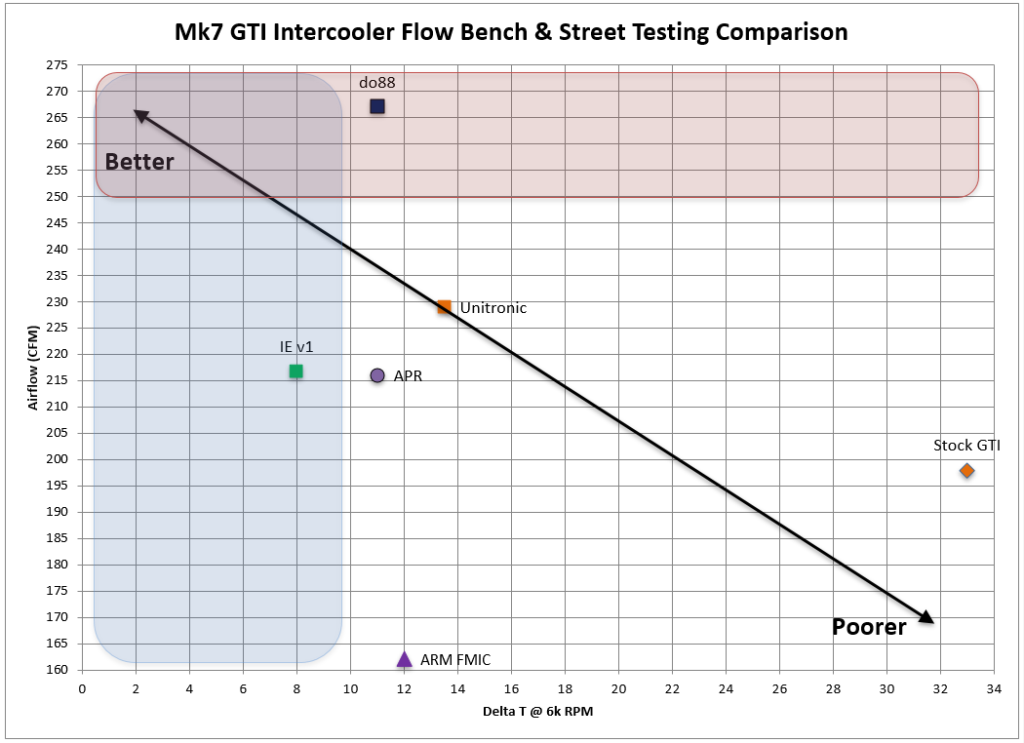Background:
ARM Motosports FMIC for the Mk7 is installed on my GTI to collect operating performance data.

Note: This intercooler is a replacement for the first one that I received as that one had not been cleaned adequately during manufacturing. ARM Motorsports customer service was easy to work with and they shipped a replacement quickly.
The ARM Motorsports FMIC is similar in design to the Vibrant 12810 core, to such an extent that it appears to be a copy. During flow bench testing and bench cooling testing the ARM IC performed very similarly to the Vibrant IC.
Test Procedure:
The GTI is operated with an IS38+ turbocharger and custom EQT tune that has it boosting around 27 psi and then tapering near the upper RPMs down to around 22-23 psi. This is a similar boost profile to what a tuned Golf R would generate with the IHI IS38.
A series of third gear wide open throttle pulls are made starting around 2500 RPM and ending near 6500 RPM. This is repeated three times. Intake air temperatures and pressures are recorded continuously.
Test Results:
Shown first are the readings of intake air temperature at the intake manifold and the ambient air temperature. The temperature delta over ambient at 6000 RPM is noted on the chart.

The next chart shows the IAT above ambient at 6,000 RPM for the four full pulls.

The next chart adds air temperatures at other locations, which consist of the turbocharger outlet air temperature (Turbo_Out) and intercooler outlet air temperature (IC_Out).

The next chart shows the intake manifold IAT reading verus outside air temperature for the duration of each period of acceleration.

The next chart compares the compressor outlet pressure with the intake manifold pressure. The difference in these two values gives the pressure drop from the turbocharger to the intake manifold.

Operating pressure drop is compared with flow bench measured airflow for the ARM FMIC and other intercoolers that have been installed on the GTI.

Using the operating temperature rise and bench airflow these intercoolers are compared in the next multi-factor chart. Note: The ARM IC is the only Front Mounted intercooler in this comparison.

The next comparison is of the ARM FMIC and IE V1 stock location IC. This chart mostly illustrates that for an extended heavy load condition a larger surface area exposed to cooling air is beneficial (surprise!).

Conclusions:
Intake air temperature rise over ambient had a median value of 12 degF for the pulls during this test. As the first chart showed, repeated heavy boost pulls will produce an increase in this delta as the pulls continue. Note: This trend is consistent with other intercoolers that have been tested.
The second chart shows that the ARM FMIC does a good job at dropping the compressor outlet air temperature very close to the outside air temperature.
Pressure drop maxes around 4 psi, inline with predictions from the flow bench testing and as expected, higher than the larger stock location intercoolers.
Overall the ARM FMIC did a satisfactory job controlling intake air temperature under the conditions of this testing.

Thank you for this review and all of the work you do. I’ve been following/tracking your progress on this intercooler since it recently hit my radar. Based on the information provided, I will be able to narrow down my choices.
Thanks, I’m glad you found the information helpful.
Have you thought about reviewing the HG motorsports (HF series) intercooler? Another direct fit that you hear very little about.
I’m reaching a point where testing additional stock location intercoolers needs to present an easy opportunity. Buying, testing, installing, and selling, then shipping, is a bit of a hassle and the information I gain needs to be worth the effort. I’d consider testing the HG IC, but not without some mitigating factor that makes it easier than most of the ones I have tested so far.